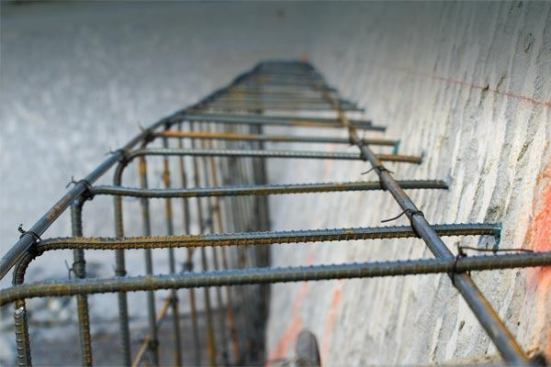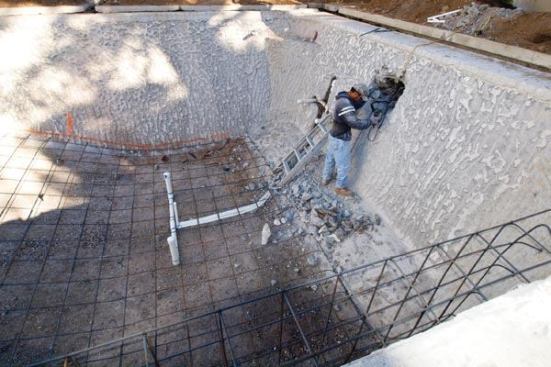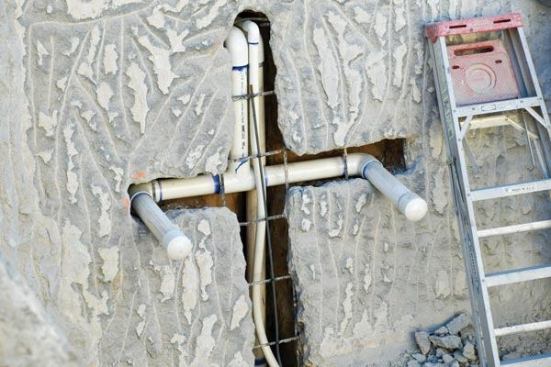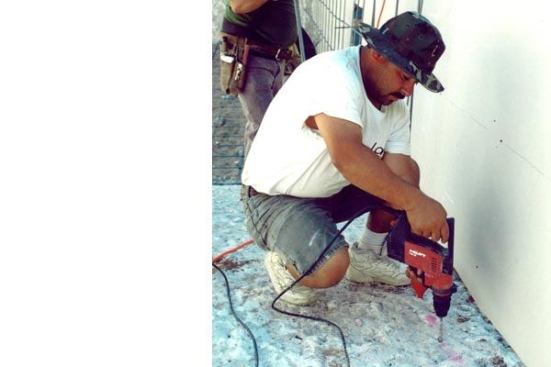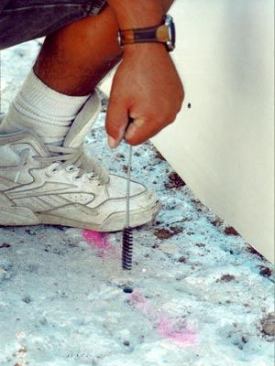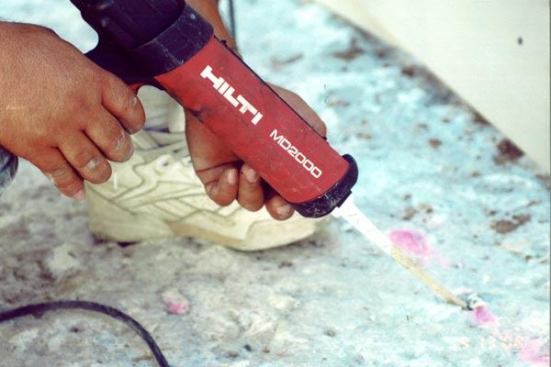Drill
Bore into the side of the existing wall using an impact drill if possible. The drill is more effective at pounding through the concrete because it goes in and out to help beat back the hard material.
“The drill bit doesn’t just rotate, but it kind of hammers in and out as well, so it makes the process go a lot faster,” Peterson says. “The only danger is when you have thin shells, it’s possible that you could blow out the back side right into the soil, so you have to be a little cautious with impact drills.”
The holes shouldn’t be too wide or narrow. If they’re oversized, the rebar will be loose and rely too much on the epoxy for stability. When the holes are too narrow, installers can only pound the bars in so deep. Choose a concrete bit the same size as the rebar. “A piece of No. 3 rebar is 3/8 inch at the outer perimeter of the ridges,” Peterson says. “So if the hole is 3/8 inches, there’s actually a little bit of space.”
